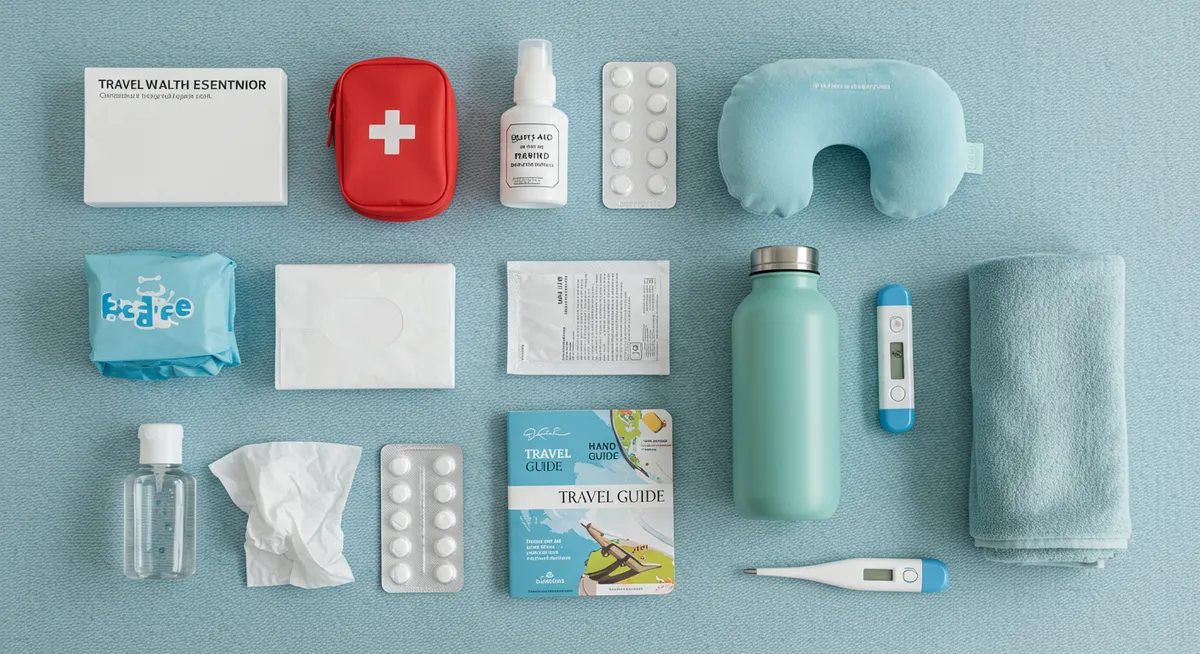
10 Health and Comfort Travel Hacks for Well-Being on the Go
Table of Contents
Want to find the best travel deals for this destination? Chat with our travel hacking specialist!
Get Travel HacksCategory: health-comfort-travel-hacks
10 Health and Comfort Travel Hacks for Well-Being on the Go
Maintaining your health and comfort while traveling is crucial for enjoying your adventure to the fullest. The physical demands of travel—from adapting to new time zones to navigating unfamiliar environments—can take a toll on your well-being if not properly managed. This guide shares 10 proven health and comfort travel hacks that experienced travelers use to stay well, manage minor ailments, and adapt to new environments with minimal disruption, ensuring you can fully enjoy every moment of your journey.
Key Takeaways
- Prepare a personalized travel health kit to address common issues before they become significant problems
- Implement effective strategies to prevent and manage jet lag for smoother time zone transitions
- Use specialized travel gear and accessories to enhance physical comfort during long journeys
- Master preventative techniques to avoid common travel health concerns like blisters and dehydration
- Develop adaptable routines to maintain wellness in changing environments and situations
1. Create a Compact Travel First Aid Kit
When traveling, minor health issues can quickly escalate into major problems that disrupt your itinerary if not promptly addressed. A personalized travel first aid kit allows you to immediately treat common ailments, often preventing them from developing into more serious conditions that might require medical attention in an unfamiliar healthcare system.
Your compact travel health kit should be tailored to your specific needs and destination, but most travelers benefit from including:
- Basic pain relievers (acetaminophen/paracetamol, ibuprofen)
- Antihistamines for allergic reactions or insect bites
- Anti-diarrheal medication for digestive issues
- Motion sickness remedies if you're sensitive to movement
- Hydration salts/electrolyte packets for quick rehydration
- Adhesive bandages in various sizes for minor wounds
- Antiseptic wipes or solution for wound cleaning
- Blister treatment supplies (moleskin, specialized bandages)
- Any personal prescription medications in their original labeled containers
For international travel, consider adding destination-specific items based on local health risks and limited pharmacy access. Store these items in a clearly labeled, water-resistant container that's easily accessible within your luggage. For prescription medications, carry a copy of your prescription or a doctor's note, particularly for controlled substances that might raise questions at customs.
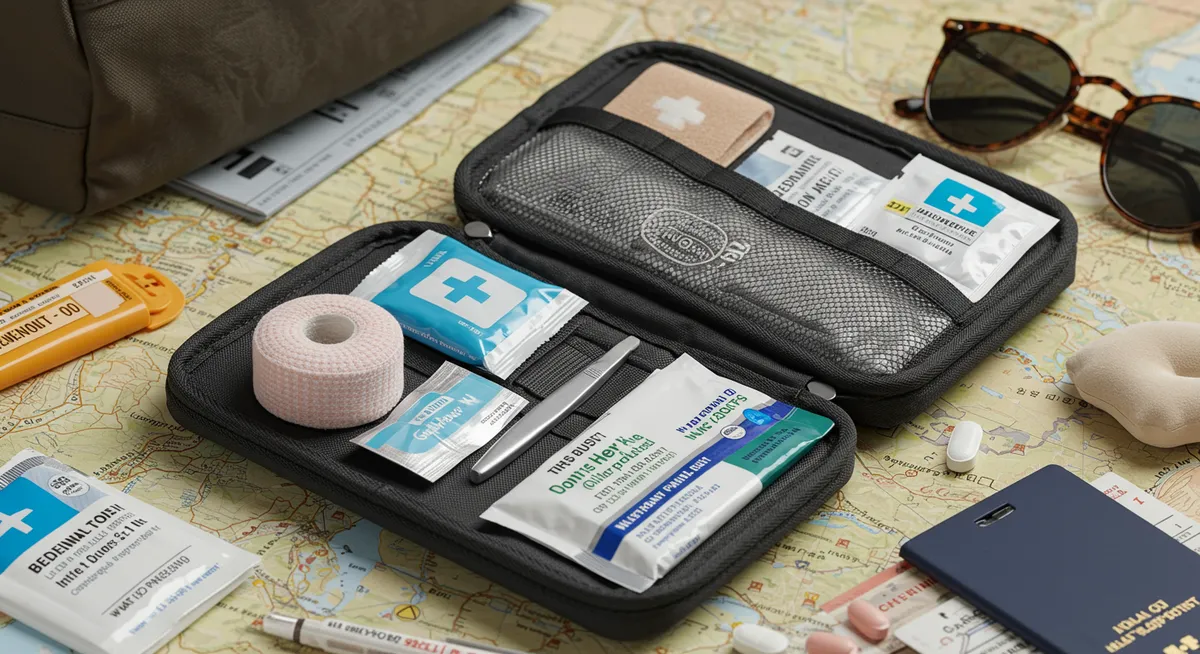
2. Stay Hydrated During Flights
Aircraft cabins typically maintain humidity levels of 10-20%—significantly lower than the 30-65% we're accustomed to in most indoor environments. This dry atmosphere accelerates dehydration, contributing to fatigue, headaches, dry skin, and increased susceptibility to respiratory infections—all of which can diminish your travel experience from the very beginning.
To combat in-flight dehydration effectively:
- Begin hydrating 24 hours before your flight, establishing a good baseline
- Bring an empty reusable water bottle through security and fill it after the checkpoint
- Aim to drink 8 ounces (240ml) of water for every hour in the air
- Limit alcohol and caffeine consumption during flights as they increase dehydration
- Use a hydrating facial mist or moisturizer to combat skin dryness
- Consider using saline nasal spray to prevent nasal passage dryness
For long-haul flights, electrolyte tablets or powders added to water can enhance hydration by replacing minerals lost through respiration and minimal perspiration in the dry cabin environment. These supplements are particularly valuable for flights over 8 hours, where cumulative dehydration becomes more significant.
Pro Tip: Set a timer on your phone or watch to remind yourself to drink water every 60-90 minutes during flights. This simple prompt helps maintain consistent hydration when you might otherwise be distracted by in-flight entertainment or sleep.
3. Use Compression Socks for Long Journeys
Extended periods of sitting during flights, train journeys, or bus rides can significantly impair circulation in your lower extremities. This reduced blood flow often leads to uncomfortable swollen ankles and feet, and in some cases, increases the risk of developing deep vein thrombosis (DVT)—a potentially serious blood clot condition.
Compression socks (also called compression stockings) apply graduated pressure to your lower legs, with the highest pressure at the ankle decreasing up the leg. This design:
- Promotes better blood circulation when seated for long periods
- Reduces swelling in feet, ankles, and calves
- Decreases the risk of developing DVT during long-haul travel
- Minimizes leg fatigue and heaviness upon arrival
- Accelerates recovery after long travel days with extensive walking
For optimal benefit, look for medical-grade compression socks with 15-20 mmHg pressure for most travelers, or 20-30 mmHg if you have known circulation issues or a history of travel-related swelling. Put them on before your journey begins—ideally before swelling starts—and continue wearing them until you can regularly move around after reaching your destination.
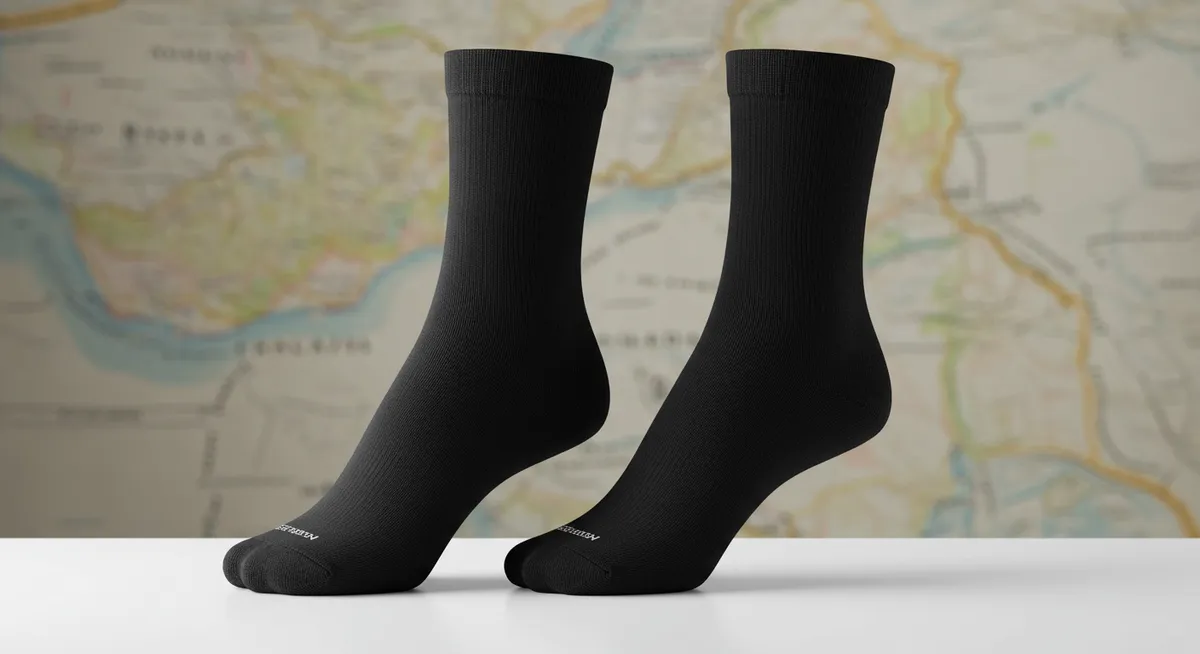
4. Pack Essential Oils for Multiple Uses
Essential oils provide multi-purpose travel solutions in compact packaging, addressing various physical and psychological challenges that arise during travel. These concentrated plant extracts offer natural remedies for common issues without the bulk of carrying multiple specialized products.
Versatile essential oils for travelers include:
- Lavender: Promotes sleep in unfamiliar environments, soothes minor skin irritations, eases headache tension, and reduces anxiety during stressful travel moments
- Peppermint: Alleviates nausea and motion sickness, refreshes during travel fatigue, relieves headaches, and serves as a natural insect repellent in some regions
- Tea Tree: Provides antiseptic properties for minor cuts and abrasions, helps with fungal issues that can develop in humid climates, and purifies questionable water in emergency situations
- Eucalyptus: Clears congested airways during flights or in polluted environments, refreshes stale hotel rooms, and repels insects in tropical destinations
For convenient travel application, transfer small amounts of essential oils into leak-proof silicon or glass containers of 5-10ml capacity. Always dilute oils properly before applying to skin (typically 1-2 drops per teaspoon of carrier oil like coconut or jojoba), and perform a patch test before your trip to ensure you don't have sensitivities to particular oils.
Pro Tip: A few drops of lavender essential oil on your hotel pillow or travel neck pillow can create a consistent sleep environment regardless of where you're staying, helping overcome sleep disruptions in unfamiliar accommodations.
5. Adapt to New Time Zones Strategically
Jet lag occurs when your body's internal clock (circadian rhythm) remains synchronized with your departure time zone rather than your destination. This misalignment affects sleep patterns, digestion, mood, and cognitive function—potentially disrupting several days of your trip. Strategic adaptation techniques can significantly reduce recovery time and minimize symptoms.
For effective jet lag management:
- Begin adaptation before departure by gradually shifting your sleep schedule 1-2 hours closer to your destination time zone for several days before travel
- Reset your watch to destination time when boarding your flight to psychologically begin the transition
- Adjust eating patterns to align with meal times at your destination as soon as possible
- Strategically manage light exposure—seek morning light when traveling east and evening light when traveling west
- Plan arrival times strategically when possible, preferring early evening arrivals that allow for a normal bedtime at destination
Upon arrival, immediately adopt local routines and resist napping except for short 20-30 minute power naps if absolutely necessary. Spend time outdoors during daylight hours to help reset your circadian rhythm through natural light exposure. For crossings of 8+ time zones, consider consulting a travel medicine specialist about temporary sleep aids if you have historically struggled with severe jet lag.
6. Prevent Blisters with Paper Surgical Tape
Foot blisters rank among the most common and debilitating travel injuries, especially on trips involving extensive walking across urban environments or through natural landscapes. These painful friction injuries can significantly limit mobility and enjoyment. Paper surgical tape (also called micropore or transpore tape) offers a remarkably effective preventative solution that weighs almost nothing and costs very little.
This simple hack involves applying paper tape to blister-prone areas before they become problematic:
- Identify your typical blister locations based on previous experience (commonly heels, sides of feet, toes)
- Clean and thoroughly dry the area before application
- Apply paper surgical tape directly to the skin, covering areas where friction typically occurs
- Smooth the tape to eliminate wrinkles that could themselves cause friction
- Replace the tape daily or when it begins to peel
Paper tape works better than traditional bandages or moleskin because it remains securely attached even with moisture from perspiration, doesn't bunch up inside shoes, and provides just enough protection without adding bulk that could create new pressure points.
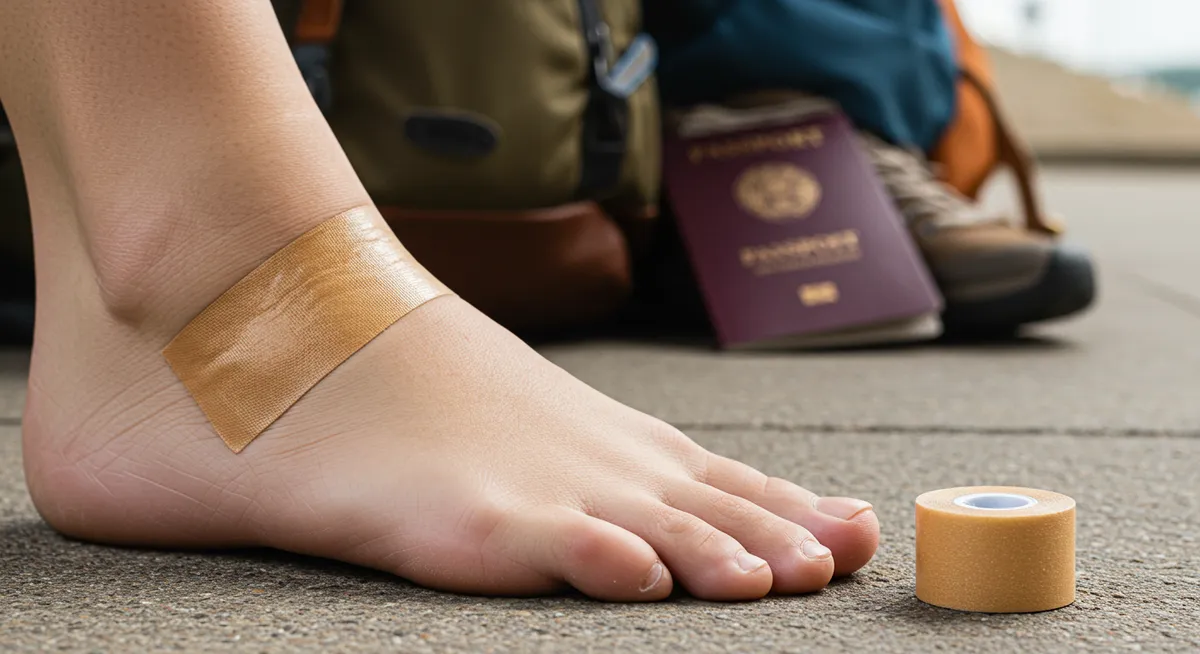
7. Use a Clothesline for Quick Laundry
Maintaining clean clothing during extended travel presents challenges, particularly with limited luggage space. A portable clothesline enables you to wash essential garments in your accommodation's sink and dry them overnight, extending your wardrobe without requiring commercial laundry services or packing additional items.
The most travel-friendly clotheslines feature:
- Braided elastic construction that requires no clothespins (clothes are secured by tucking them between the braided cords)
- Suction cups, hooks, or loops at the ends for attachment to various surfaces
- Lightweight, compact design that adds minimal weight to luggage
- Stretchy material that accommodates multiple garments in limited space
To maximize this hack's effectiveness, focus on packing quick-drying fabrics like technical polyester blends, merino wool, or specialized travel clothing. These materials might dry completely overnight even in humid environments, unlike cotton which can remain damp for days without proper air circulation.
For washing, pack a small container of concentrated, biodegradable soap like Dr. Bronner's, which can serve as body wash, shampoo, and laundry detergent—eliminating the need for multiple products. The combination of multi-purpose soap, a portable clothesline, and quick-drying fabrics creates an efficient system for maintaining clean clothing throughout your journey.
Pro Tip: In humid environments where overnight drying is challenging, point a room fan directly at your hanging garments to significantly accelerate drying time. Most hotel rooms have at least one small fan available.
8. Bring Rehydration Solutions
Dehydration during travel can result from various factors: airplane cabin environments, increased physical activity, different climates, and gastrointestinal issues that cause fluid loss. Electrolyte imbalance compounds these problems, as water alone doesn't replace the essential minerals lost through perspiration and certain illnesses.
Oral rehydration solutions (ORS) and electrolyte supplements address both fluid and mineral replenishment needs. These portable products:
- Restore proper electrolyte balance more effectively than water alone
- Accelerate recovery from mild dehydration caused by heat, activity, or minor illness
- Improve energy levels and cognitive function during demanding travel days
- Help prevent serious complications that can arise from untreated dehydration
- Potentially reduce the severity of altitude sickness in high-elevation destinations
Modern electrolyte supplements come in convenient tablets, powders, or liquid concentrates that can be added to water. Look for formulations with balanced electrolytes (sodium, potassium, magnesium) and minimal added sugars. For travel to regions with higher risk of traveler's diarrhea, consider packing medical-grade ORS packets, which have specific proportions of electrolytes designed for addressing significant fluid loss.
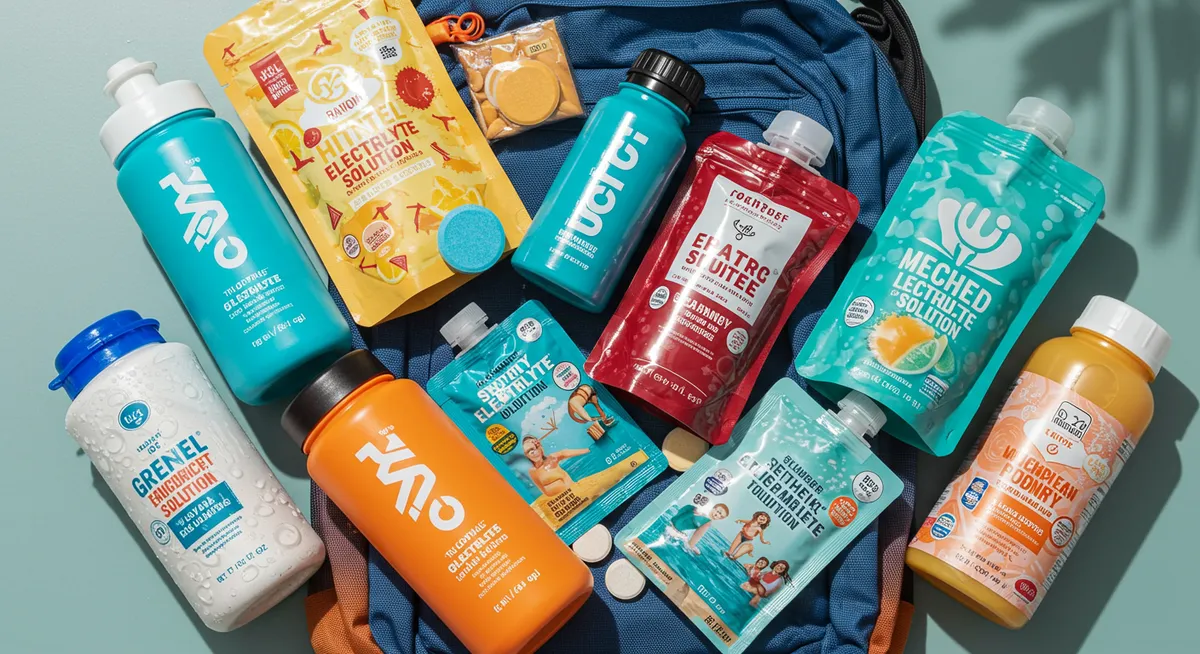
9. Carry a Compact Travel Pillow
Quality sleep during transit significantly affects your overall travel experience, yet sleeping comfortably in upright positions presents obvious challenges. A well-designed travel pillow provides crucial neck support, preventing the muscle strain and discomfort that typically result from sleeping in seated positions on planes, trains, and buses.
Modern travel pillows have evolved far beyond the basic U-shaped inflatable designs, with innovations including:
- Memory foam pillows that compress into small carrying pouches but expand to provide superior support
- Inflatable pillows with ergonomic designs that support the neck in multiple sleeping positions
- Scarf-style pillows that look like fashion accessories but contain hidden structural support
- Sling-type supports that attach to headrests or tray tables to support your head while leaning forward
- Convertible designs that can be reconfigured for different vehicles and seating arrangements
When selecting a travel pillow, consider your typical sleeping position and primary transportation modes. Side sleepers generally benefit from pillows with thicker side supports, while those who tend to nod forward might prefer designs that provide frontal support.
For maximum comfort, pair your travel pillow with other sleep accessories like a light-blocking eye mask and earplugs or noise-canceling headphones. This combination creates a sleep-conducive microenvironment regardless of your surroundings.
Pro Tip: If your travel pillow has a removable cover, pack a small bottle of sleep-promoting linen spray with lavender or chamomile. Lightly misting the pillow before use creates a consistent sleep-associated scent that can help trigger your sleep response even in unfamiliar settings.
10. Protect Your Skin in Multiple Climates
Travel frequently involves moving between distinct climates and environments, each presenting unique challenges for skin health. From dry airplane cabins to humid tropical locations or harsh alpine conditions, these rapid environmental transitions can stress your skin's natural balance and protective functions.
A strategic approach to skin protection involves:
- Using a broad-spectrum sunscreen (minimum SPF 30) daily, regardless of climate or weather conditions
- Applying moisturizer regularly, especially after air travel or in dry climates
- Carrying a combination sunscreen/moisturizer to minimize packed items
- Adjusting your skincare routine based on destination conditions
- Protecting lips with SPF-containing balm to prevent painful cracking and burning
For travelers visiting multiple climate zones within one trip, consider products specifically designed for environmental transitions. Oil-free, non-comedogenic formulations work well across climate types without causing breakouts in humid conditions. Mineral-based physical sunscreens containing zinc oxide or titanium dioxide offer broad protection and tend to be less irritating than chemical formulations across different environments.
Additionally, paying attention to appropriate clothing (like UPF-rated fabrics in sunny climates) and accessories (wide-brimmed hats, sunglasses) complements your skincare routine and provides comprehensive protection from environmental stressors.
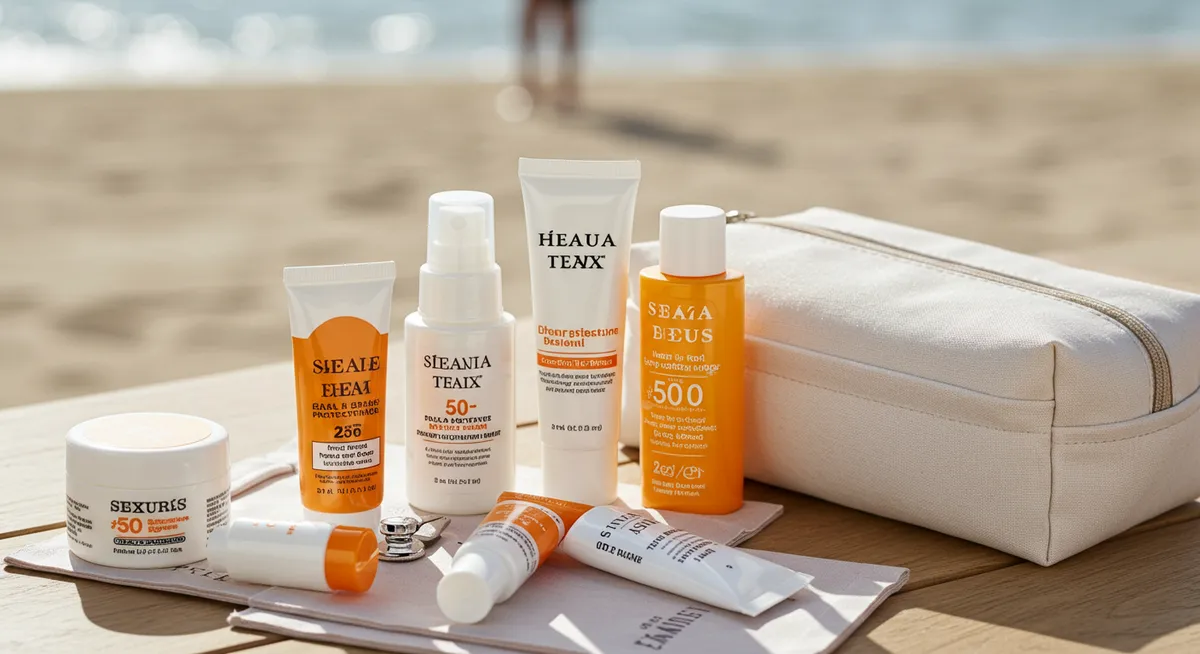
Frequently Asked Questions
How can I sleep better on long-haul flights?
Wear compression socks, use a quality travel pillow, bring an eye mask and earplugs, avoid alcohol and caffeine, stay hydrated, and try to align your sleep with the destination time zone. For flights over 8 hours, consider discussing temporary sleep aids with your doctor before traveling.
What's the best way to prevent and treat traveler's diarrhea?
For prevention, be cautious with food and water safety, wash hands frequently, and consider probiotics before and during travel. For treatment, focus on hydration with electrolyte solutions, use anti-diarrheal medication for symptom management (not for fever or bloody stools), and seek medical attention if symptoms are severe or persistent.
How can I stay fit and maintain my exercise routine while traveling?
Pack resistance bands for in-room workouts, download fitness apps with equipment-free routines, use hotel stairs instead of elevators, walk or bike instead of using transportation for short distances, and research hotels with fitness facilities before booking. Incorporate active sightseeing like hiking or walking tours into your itinerary.
What should I do if I get sick in a foreign country?
For minor illnesses, use your travel health kit for symptom management. For more serious concerns, contact your travel insurance provider's 24-hour assistance line, visit a local pharmacy for minor issues, or find an international clinic in major tourist destinations. Always carry your insurance information and consider medical evacuation coverage for remote destinations.
How can I manage food allergies or dietary restrictions while traveling internationally?
Research local cuisine and ingredient terminology before your trip, learn to communicate your restrictions in the local language (translation cards can help), research allergy-friendly restaurants in advance, consider accommodations with kitchen access, pack emergency allergy medication if applicable, and bring some safe snacks for situations with limited options.
Integrating these health and comfort travel hacks into your journey will dramatically improve your overall travel experience. Feeling well physically and mentally allows you to fully engage with your destination and create more meaningful memories. By proactively addressing the common health challenges of travel, you transform what could be discomforts into minor considerations, keeping your focus where it belongs—on the extraordinary experiences that make travel so enriching.
Related Travel Resources
Enhance your travel well-being by exploring these complementary travel resources:
Essential Travel Strategies
- 🧳 3-2-1 Packing Cube System - Pack health essentials efficiently
- 🏨 Hotel Room Upgrade Email Template - Get more comfortable accommodations
- 🌎 Hidden Destination Alternative Finder - Discover less crowded, less stressful locations
- ✈️ 24-Hour Flight Price Lock Strategy - Reduce travel planning stress
Related Travel Categories
- 📱 Tech & Connectivity Hacks - Stay connected for emergencies and peace of mind
- 🎒 Packing Hacks - Pack comfort items efficiently
- 💰 Money-Saving Hacks - Reduce financial stress while traveling
- 🌟 Top-Rated Travel Strategies - Discover our premium travel techniques
For a complete framework to transform your travel experience, including more health and comfort strategies, visit our Ultimate Travel Hacks Guide.
Related Posts
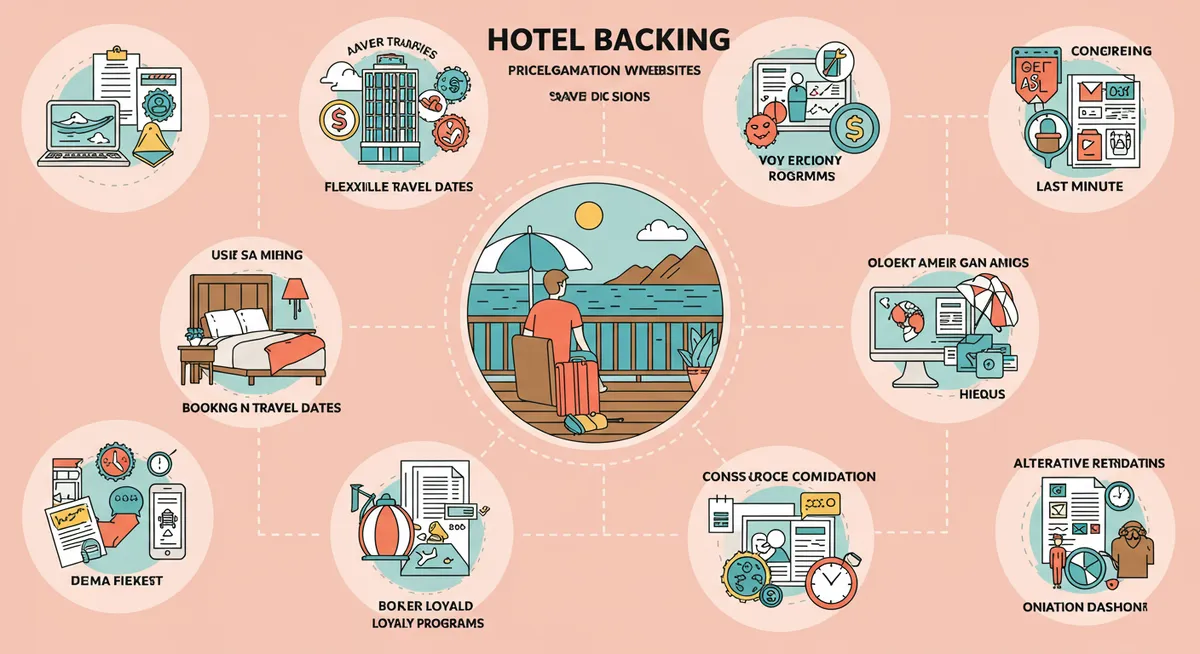
10 Clever Accommodation Hacks for Better Stays at Lower Prices
Discover 10 expert accommodation hacks that will help you find better lodging options, secure room upgrades, and save significant money on hotels and alternative stays.
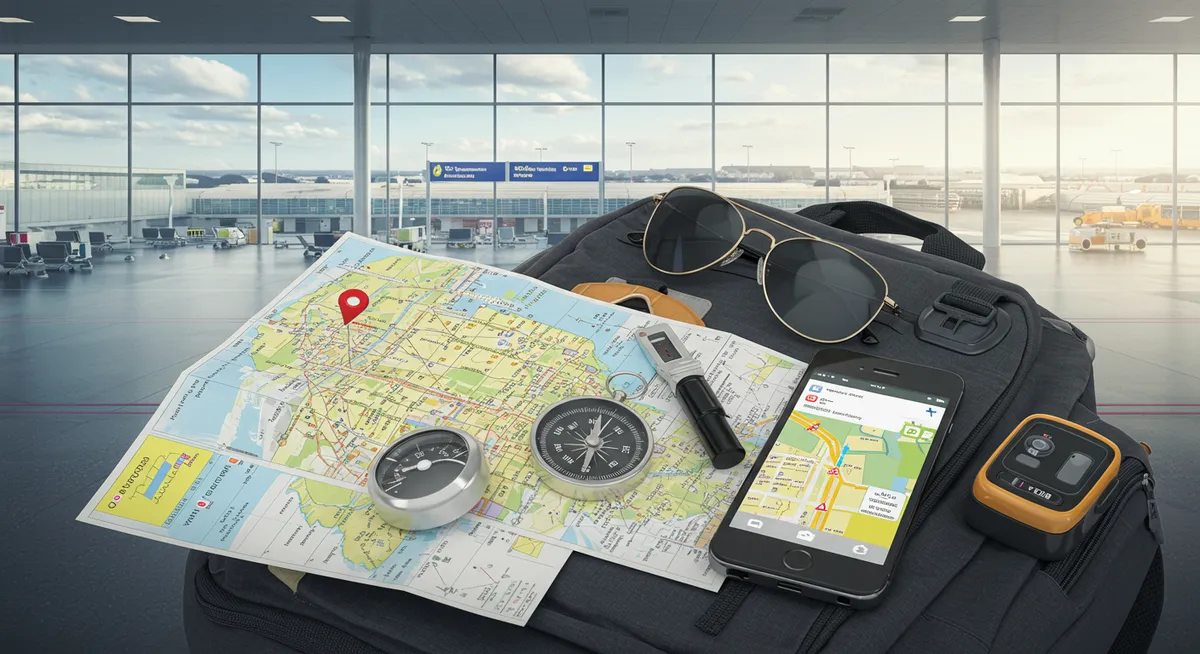
10 Genius Airport Hacks for Smoother, Stress-Free Travel
Master the art of airport navigation with these 10 clever hacks that will help you breeze through security, avoid delays, and make your airport experience more comfortable and efficient.

10 Essential Flight Hacks to Save Money and Travel Better
Discover 10 powerful flight hacks that will help you find cheaper airfares, get upgrades, and make your air travel experience more comfortable and affordable.